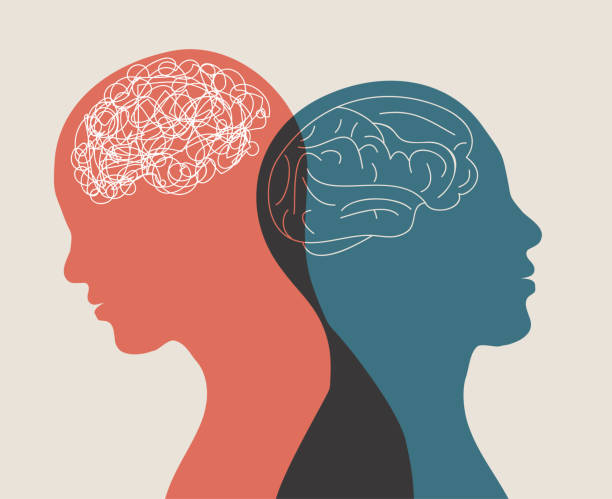You think no one saw your latest TikTok… but in your mind, everyone is watching, judging, maybe even memorizing that awkward wiggle. Welcome to the strange theater of the Invisible Audience Effect.
Read More: Nice Guy Syndrome
What Is It?

First introduced by David Elkind in the 1960s, the imaginary audience describes a teenage mind convinced that every action—like sneezing in class—is watched by an imaginary crowd. It’s a hallmark of adolescent egocentrism, where self-obsession reigns supreme, and the teen brain blurs the line between “others are watching” and “everyone must be watching” (Elkind, 1967).
Fast-forward to today’s world of Instagram selfies and YouTube vlogs, and this imaginary crowd has gone digital—becoming the Invisible Audience, the hazy mass of followers, lurkers, and “should-be watching people” living in your head.
How Social Media Fans the Flames
Research shows that heavy social media use among adolescents is linked to a shrinking gap between how they see themselves and how they think peers see them. This indicates that the invisible audience is growing more influential (Michikyan et al., 2014). In one study, teens who used social media more heavily had smaller differences between self-ratings and reflected peer ratings, especially in domains like physical appearance and academic self-concept. Neural activity in the medial prefrontal cortex also spiked when comparing self versus peer judgments (Somerville et al., 2013).
Another study confirmed a positive connection between Facebook use and the intensity of imaginary-audience ideation among adolescents and young adults. The more time spent on the platform, the more vivid and persistent the imaginary crowd seemed (Blease, 2015).
Why It Matters

This isn’t just youthful drama. Sustained exposure to the invisible audience can foster heightened self-consciousness and social anxiety. We’re not talking about mild “Oops, did I misspell?” worry—but full-blown “Everyone is judging me” panic before hitting “post.”
The spotlight effect, a cognitive bias where people overestimate how much attention others pay to them, explains part of the phenomenon (Gilovich et al., 2000). Meanwhile, the looking-glass self theory reminds us that in digital spaces, our self-view is constructed from imagined reflections—likes, comments, follows—from others beholding us (Cooley, 1902).
The Hidden Toll
- Body-image issues: This performance mindset can amplify appearance anxiety, especially in highly visual platforms among teens (Fardouly et al., 2015).
- Authenticity anxiety: Users may edit, curate, and perform in ways that feel “real” yet further fuel invisible audience pressure.
- Decision paralysis: “Should I post this or wait until tomorrow?” becomes a frequent internal debate as we second-guess the crowd’s reaction.
A Lighter Perspective and Fixes
- Reality Check – Ask: “Who’s really watching?” Chances are, just a few—or none.
- Reverse the Audience – If you saw someone acting like you are, would it matter? Probably not.
- Mindfulness to the Rescue – Ground yourself: are you in this moment or performing for an imaginary jury?
- Creative Reframe – Flip it: enjoy the invisible audience as a secret cheering section, rooting for your quirks.
Conclusion
The Invisible Audience Effect is our brain’s dramatic projection—an emotional stage we didn’t audition for. Fueled by social media, it tricks us into performing under imagined scrutiny. But here’s the fun truth: the crowd is mostly illusory, and stepping off the stage is as simple as rewiring our focus.
References
Blease, C. (2015). Too many ‘friends,’ too few ‘likes’? Evolutionary psychology and ‘Facebook depression’. Review of General Psychology, 19(1), 1–13. https://doi.org/10.1037/gpr0000030
Cooley, C. H. (1902). Human nature and the social order. New York: Scribner’s.
Elkind, D. (1967). Egocentrism in adolescence. Child Development, 38(4), 1025–1034. https://doi.org/10.2307/1127100
Fardouly, J., Diedrichs, P. C., Vartanian, L. R., & Halliwell, E. (2015). Social comparisons on social media: The impact of Facebook on young women’s body image concerns and mood. Body Image, 13, 38–45. https://doi.org/10.1016/j.bodyim.2014.12.002
Gilovich, T., Medvec, V. H., & Savitsky, K. (2000). The spotlight effect in social judgment: An egocentric bias in estimates of the salience of one’s own actions and appearance. Journal of Personality and Social Psychology, 78(2), 211–222. https://doi.org/10.1037/0022-3514.78.2.211
Michikyan, M., Dennis, J., & Subrahmanyam, K. (2014). Can you guess who I am? Real, ideal, and false self-presentation on Facebook among emerging adults. Emerging Adulthood, 2(1), 55–64. https://doi.org/10.1177/2167696813514824
Somerville, L. H., Jones, R. M., Ruberry, E. J., Dyke, J. P., Glover, G., & Casey, B. J. (2013). The medial prefrontal cortex and the emergence of self-conscious emotion in adolescence. Psychological Science, 24(8), 1554–1562. https://doi.org/10.1177/0956797613475633
Subscribe to PsychUniverse
Get the latest updates and insights.
Join 3,022 other subscribers!
Niwlikar, B. A. (2025, August 16). Smile, They May Be Watching: The Invisible Audience in the Digital Era. PsychUniverse. https://psychuniverse.com/invisible-audience-in-the-digital-era/



